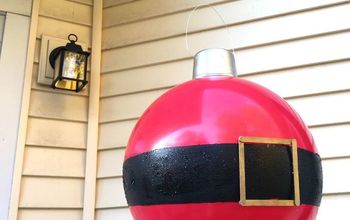Keeping Our Wooded Landscaping Clear

One of our favorite parts about where we live is the plot of land that our home sits on. It’s not in the woods, but it is surrounded by mature trees. Along our driveway alone, we have 50-year old maple trees, pecan trees and pin oaks. I love the natural shade it provides and the established look that it gives our home, but during the fall and winter, when those leaves are cascading to the ground, it can leave us with heaps to clean up.
Over the years, we have tried many methods for removal, but finally discovered a few handy tricks and tips that we now use every year. Here is a quick rundown on how we keep our semi-wooded landscape as clear as possible without sacrificing too much time in the process.
For years, we struggled in vain to rid our yard of every last leaf. We’d spend hours with a handheld leaf blower, trying to coax piles upon piles of them to move inch by inch toward the backyard. It was futile at best and downright aggravating at worst. Or, we’d hire someone with more dynamic power tools to handle the job, then cringe when it was time to pay the bill.
Our breaking point came two years ago, when my husband and I worked during our kids’ nap time to move all of the leaf piles onto a big plastic tarp, then drag them to the woods. The tarp split apart halfway across the backyard, leaving us with such an awful mess to clean up. We decided there had to be another way, so we asked our neighbor with the spotless yard how to proceed.
He told us that it’s better to mow over your leaves and essentially turn them into rich mulch, rather than try to collect and gather them altogether and then move them somewhere else. It’s quicker, cheaper and you’re going to be mowing anyway, so it only makes sense. As the mulch decomposes, it will actually enrich the soil, making it a win-win.
We were also advised to keep our tools as sharp and clean as possible. We had been using an outdated, older model tractor-style lawn mower to get the job done and while it was efficient, it took hours and we couldn’t figure out why. In any area of life or niche, from home maintenance to business management, staying sharp is key.
Our yard wasn’t that big! Turns out, we had wet grass stuck underneath that was getting caught in the gears and slowing up the machine. We went to work removing it and while we were in the garage, we also sharpened the blades on our pruners, our rake and our shears. Since then, we’ve had two major hurricanes hit our area of the east coast and we’ve been glad to have the sharper, more efficient tools at our disposal.
Another great tip is to spread out your leaf removal efforts. That year of the tarp (as we now call it), we waited until the season was almost over to begin to tackle the job. We were in over our heads and it took weeks to finally clear our yard. Imagine our dismay when the very next day, a huge wind storm happened and the once-clear ground was once again covered.
Since then, we’ve worked at it every time we mow during the season, and every week or so once mowing has ceased. This way, we aren’t dealing with an entire autumn’s worth of leaves on the ground. Rather, it’s only what has accumulated since the last time we worked outside.
Though we make every effort to mow our leaves into mulch, there are times when we need to take care of them, but don’t feel like firing up the mower because we just mowed or we just don’t have that much time. In these cases, we will enlist the use of our handy rake, though we now prefer to rake the leaves into separate rows that we can go back and collect or bag later, rather than in big piles that have to be handled as oversized challenges.
While these tips might not be revolutionary, they’ve saved our back and our bank account on multiple occasions. Especially if you live in the woods or near trees that have a tendency to shed, as our pin oaks do, it’s important to establish a routine for leaf removal that is as effective as possible.
Of course, if you live in a neighborhood, you’ll need to get up to speed on which types of work your community will allow. It would be a waste of time to collect your current leaves into a few large piles, only to find out that it will be weeks before they’re picked up along the side of the road. There may also be regulations around which types of bags you can use for leaf disposal. Living in the country, we didn’t have any of such standards to follow, though it did take plenty of trial and error for us to finally get it right.
Enjoyed the project?
Suggested materials:
- Lawn Mower (Hardware Store)
- Iron-Toothed Rake (Hardware Store)
- Heavy Duty Tarp (Hardware Store)

































Frequently asked questions
Have a question about this project?